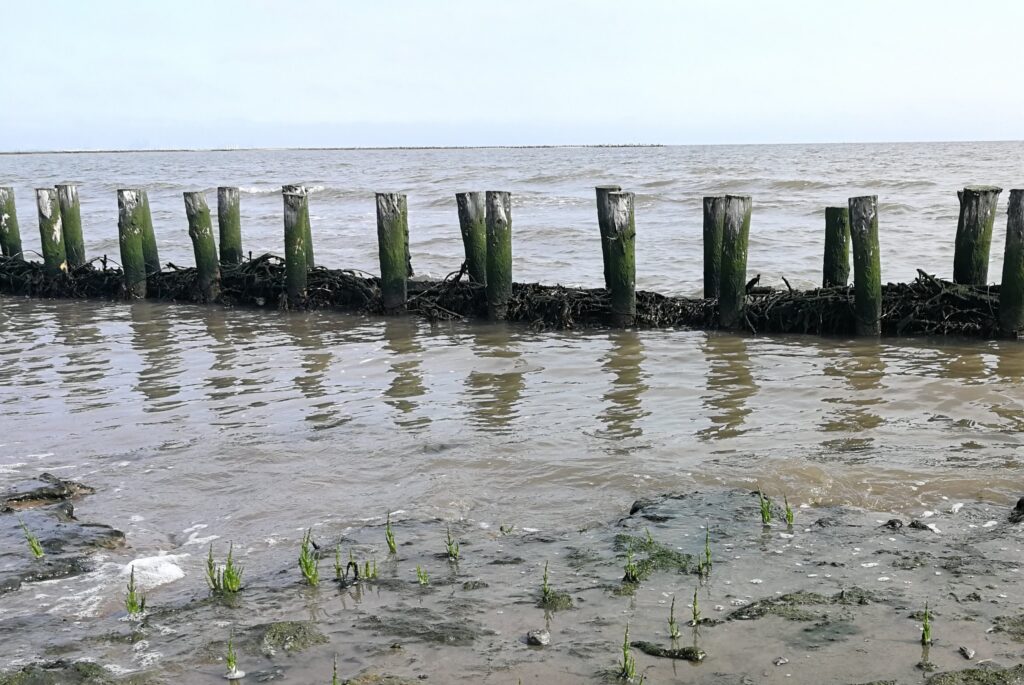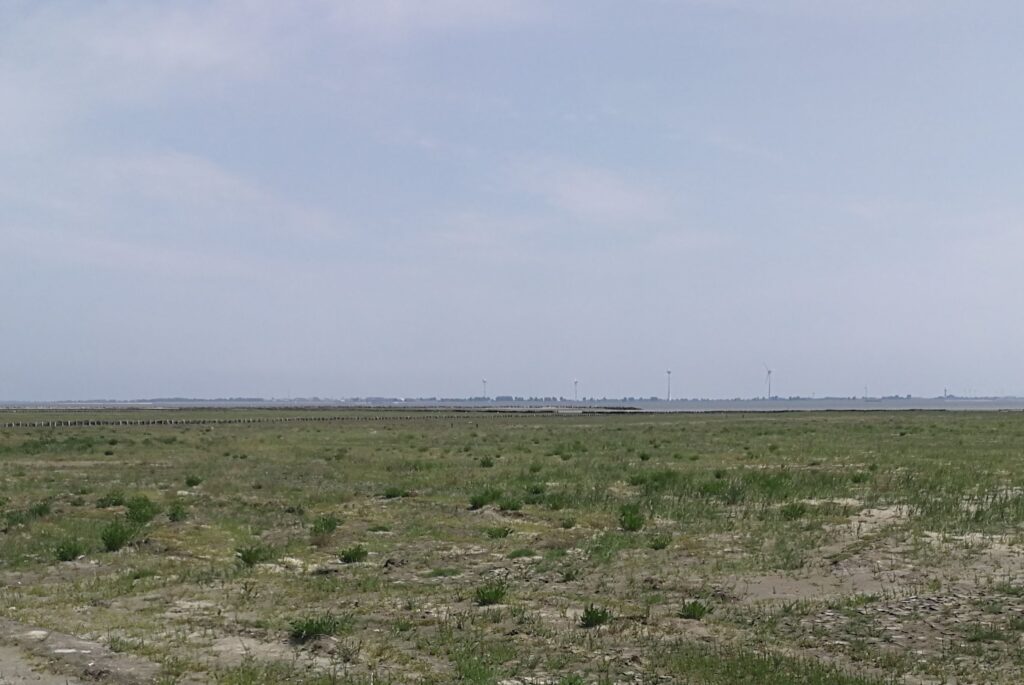Where until recently the salt marsh still looked like a desolate beach, now the pioneer salt marsh is almost indistinguishable from a natural salt marsh. “When you think away the windmills along the screen dike, you really get the feeling that you are walking on a salt marsh on the tidal flats”, says researcher Marinka van Puijenbroek.
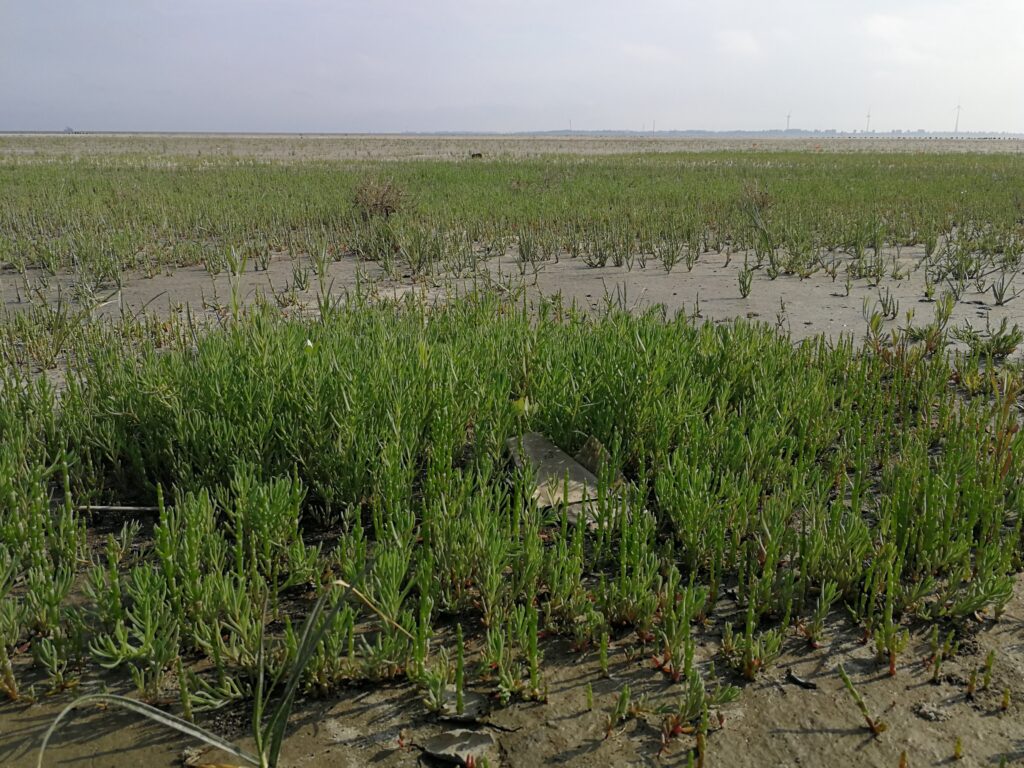
In the spring of 2019, the artificial salt marsh in front of the port of Delfzijl was given a major boost by sowing glasswort. Under the watchful eye of the press, the plant, which is typical of the mudflats, was sown in test beds several hectares in size. Spreading the seed by hand not only resulted in beautiful images; the pioneer species massively grew and turned the salt marsh red last autumn.
“It’s very nice to be on the salt marsh,” says EcoShape researcher Marinka from Wageningen Marine Research. The plant ecologist was in June for fieldwork on the salt marsh. “When you think away the windmills along the screen dike, you really have the feeling that you are walking on a salt marsh on the tidal flats. Oystercatchers also flew around us all the time and we’ve already found four nests.” In addition to oystercatchers, several pairs of fur-billed plovers nested on the higher located bird island.
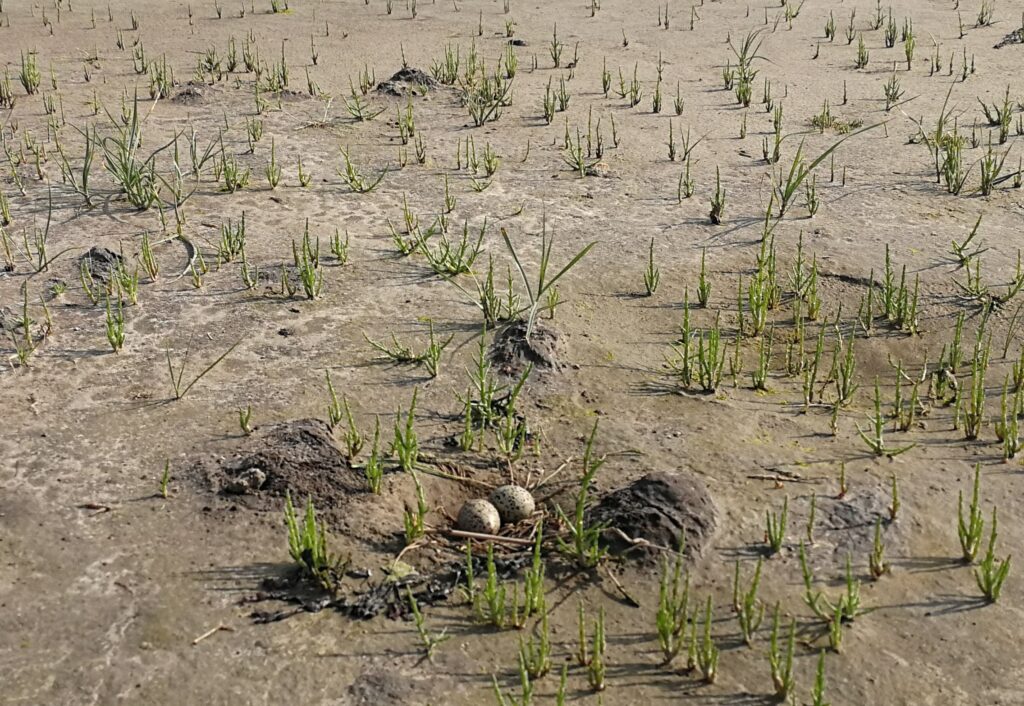
Nail biting because of dry spring
A green haze can be seen all over the salt marsh and the expectation is that the salt marsh will become even greener. Yet this spring it was still exciting whether the glasswort would rise again. In April it was still bare on the salt marsh. “Marsh samphire is an annual plant and has to germinate every year. This requires fresh water and this spring it was once again extremely dry,” says Bente de Vries, coastal morphologist involved in EcoShape partner Royal HaskoningDHV. Despite the dry spring, the vegetation still rose and the coverage went from four percent this autumn to locally fifty percent in June.
Vegetation creates shelter and in this way contributes to further mudding up of the salt marsh. This is important, because it allows the salt marsh to grow along with sea level rise. “A rise of 1 to 2 centimeters per year is usual”, says Bente, who analyses the data together with the researchers involved from Deltares and Wageningen Marine Research. At this moment no clear trend can be measured, but the researchers expect the salt marsh to grow along now that there is more vegetation.
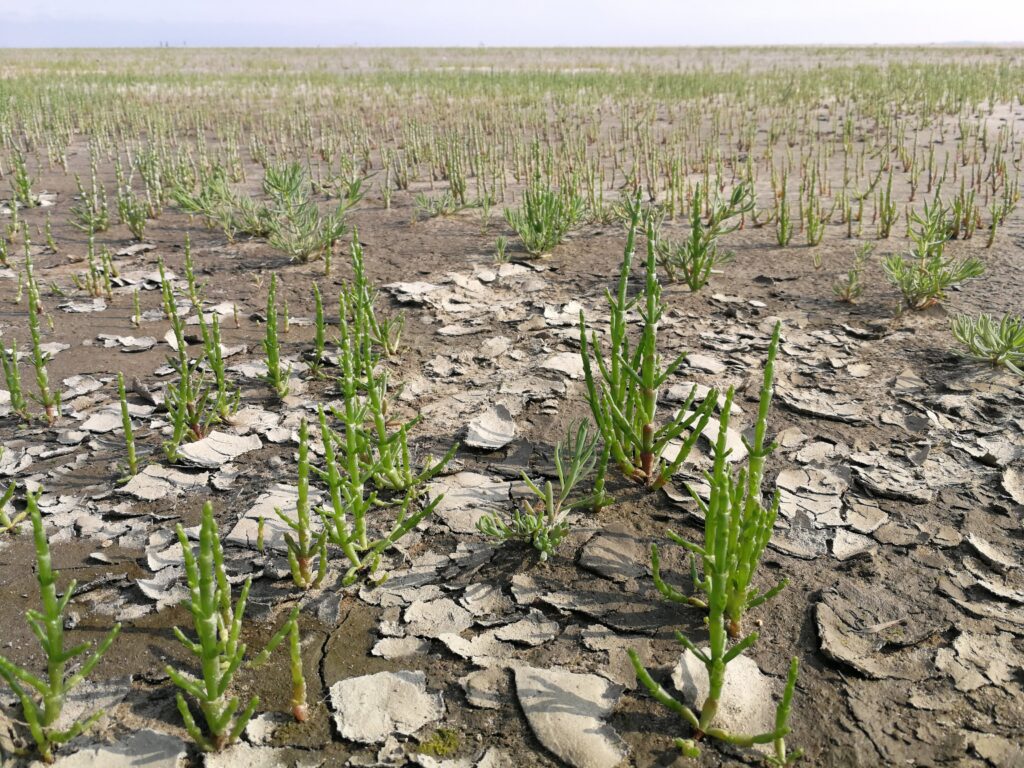
Learning about salt marsh development
The name of the pioneer salt marsh has a double meaning: In addition to the pioneer vegetation, it is also pioneering to find the right recipe to artificially create a salt marsh. The test subjects therefore also differ greatly in the fraction of mud present. In the sandy sections (five percent mud) you will find relatively little vegetation, while the sections with twenty and fifty percent mud are just as green. “It seems that twenty percent is the optimum, also because in compartments with more mud you can still see deep tire marks of the material,” Marinka sees.
All this knowledge is valuable in finding out which approach is most effective for salt marsh restoration and how local mud can be reused in the process. Another important objective of the project is to learn how salt marshes contribute to improving water quality, while at the same time creating high-quality nature. A salt marsh thus increases both the safety and the attractiveness of the coast.
Salty sea spurrey and sea rush
The vegetation has now been mapped nine times. In boxes of 2 by 2 all species are determined and the covering is estimated visually. “We have already found 14 plant species,” says Bente. “All species that you would expect on a young salt marsh, for example saltwater spurrey, small salt marsh and sea rush.” It is also noteworthy that both long-haired and short-haired glasswort have emerged this year, while only long-haired glasswort has been sown. As expected, on higher parts you see mainly eelgrass, and at the front of the salt marsh (the pioneer zone) only glasswort.
The last field measurements are in September, but both researchers hope that the measurement campaign will be extended. In any case, the glasswort is doing very well. And that is not only good for the salt marsh, but also a good thing for the researchers. Marinka: “I’ve brought a modest amount home and that’s really delicious in a salad”.
